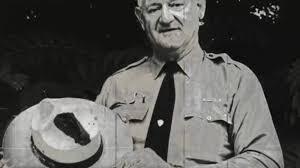News And PoliticsCommunications And EntertainmentSports And FitnessHealth And LifestyleOthersGeneralWorldnewsBusiness And MoneyNigerianewsRelationship And MarriageStories And PoemsArts And EducationScience And TechnologyCelebrityEntertainmentMotivationalsReligion And PrinciplesNewsFood And KitchenHealthPersonal Care And BeautyBusinessFamily And HolidaysStoriesIT And Computer ScienceSportsRelationshipsLawLifestyleComedyReligionLifetipsEducationMotivationAgriculturePoliticsAnnouncementUSMLE And MedicalsMoneyEngineeringPoemsSocial SciencesHistoryFoodGive AidBeautyMarriageQuestions And AnswersHobbies And HandiworksVehicles And MobilityTechnologyFamilyPrinciplesNatureQuotesFashionAdvertisementChildrenKitchenGive HelpArtsWomenSpiritualityQuestions AnsweredAnimalsHerbal MedicineSciencePersonal CareFitnessTravelSecurityOpinionMedicineHome RemedyMenReviewsHobbiesGiveawayHolidaysUsmleVehiclesHandiworksHalloweenQ&A
Social Sciences
profile/7862inbound8592790437229642270.jpg
Joybae

Some Pls Do Have Cole Under Dere Feet Dey Don't Know Untill Dey Discover It
~6.4 mins read
Hours After Man Was Digging 110 Feet Well In Search Of Water And Saw This, See How People Reacted
HouseofTiara247
Feb 13, 2021 4:43 AM
A man has taken to his twitter handle to share what he found while digging a well in Enugu. Getting a clean water especially in the eastern regions is very difficult during the dry season. Most people even have to travel as far as two streets to theirs in search of a place to get water. In dry season, most of the easterners who do not have private boreholes in their homes would fetch from ponds, filter it and use it for cooking, washing and bathing. Am not sure if they usually drink it
A man identified as Ikemba Zaza has taken to his twitter page to narrate their experience while they search for water in his Enugu town.
Read details below

Apart from Ikemba Zaza' s encounter, I have been a witness to this ugly menace. That was in 2010 when I visited one of my friends who lived there in Enugu, Oghum to be precise. We had to travel miles in search of water to cook. Some of the houses we entered then, even had their Wells locked up while others were selling a gallon, N20 before you could have an access to queue up your container. No matter how small or big your container was, they would charge 20 naira.
Enugu is indeed a coal city, See what the man Allegedly dug from the ground while digging his 11feet well:




See people's reactions
Personally, I think people should try and build their personal boreholes in their homes and stop waiting for the government to do everything for them. If some people have the opportunity, they will wait for government to also put foods inside their mouths. The government has too much burden they are taking care of already
profile/4110download1.jpeg
Glorious

Meet The Man Who Was Struck By Lightning 7 Times
~2.2 mins read
The odds that a person in USA will be in any one year is 700,000, the odds of a person being strucked in a year is 3,000, between the years 1959 and 2003, 3696 death have been recorded although it isn't necessary that a person stuck dies immediately it may also result to cardiac arrest.
Although, according to the National Weather Service that 1 in 13,500 is likely to be struck by lightning in a lifetime, also the chances that a man will be struck and killed by lightning is however higher than that of the women.
However, with all these odds and chances a man has actually been struck by lightning 7 times, yes you read that right 7 times, in this article I bring to you Roy Cleveland Sullivan (February 7, 1912 - September 28, 1983)
Who is Roy Cleveland Sullivan?
Roy Sullivan was born in Greece county, Virginia, in February 7 2012, He works as a park ranger in Shenandoah National Park, Virginia, he has been recognized by Guinness world record as the person the highest recorded amount of times struck by lightning, he has been recorded to have been struck 7 times between the years (1942 and 1977), he has been giving many nicknames due to his feats, among which "Human lightening conductor" and "human lightening rod" are most popular.
See records of his seven lightening strikes
A single lightning strike of several 100 million Volts and it's peak current is in order of 20,000 Amp
1. April 1942- his first recorded lightning encounter started, where he lost his big toe
2. July 1969- his second encounter was in 1969 where he lost his eyebrows
3. July 1970- he was struck by lightning the third time and this time he seared his left shoulder
4. April 1972- this time, which was the fourth he lost his hair in the process of the lightning strike
5. August 1973- his hair was re-set on fire during his fifth lightning encounter and also his leg seared
6. June 1976- in Roy Sullivan 6th lightning encounter, he injured his ankle and thus makes it his sixth lightning encounter
7. June 1977- this is the seventh and last experience where he had chest and stomach burn and this marked his last light experience.
His death
On September 28, 1983 Roy Cleveland Sullivan was struck again, but this time not by lightning, he shot himself (committed suicide) with a gun and thus marks the end of the "Human lightening conductor" Roy Cleveland Sullivan.
profile/2896d1f9af418a2f4c11bee789efbde4a6c1.jpg
Lawrence66

A Grateful Heart: A Look At The The Imposing House Regina Daniels Bought For Her Mom A Year Ago Just To Say Thank You
~0.6 mins read
Obviously, Regina Daniels’ status as the wife of a billionaire was hugely influenced by her mother Rita Daniels who happens to be a movie star and filmmaker.
Recall how Regina Daniels’ father had disassociated himself from her marriage to her 64-year old husband claiming her estranged wife Rita Daniels was the one pushing through with the marriage for personal gains (financial rewards as the Ned Nwoko is fabulously rich).
Beyond that, Rita Daniels has stood with the daughter through thick and thin after the marriage and the constant trolls from social media users. This is perhaps one of the more reasons why the young actress who started off her career as a child actor bought an imposing house for her.
See photos below;
Advertisement
Loading...
 Joybae
Joybae
 Glorious
Glorious
 Lawrence66
Lawrence66